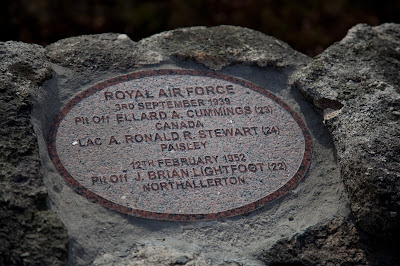A golden cigarette case – by Duncan Harley
The contract for the new Don bridge was awarded to construction company William Tawse and, following the building of a temporary wooden crossing and demolition of the
old bridge, construction of the new reinforced concrete bridge began in the April of 1924. A year later on the morning of 30 May 1925 an excited
crowd of onlookers gathered to witness both the official testing and the official opening of the new bridge.
At 10am precisely, a steam whistle blew and with a mighty roar two massive steam-driven road trains moved slowly in tandem onto the newly built roadway. Each road-train consisted of a steam-road-roller towing two eight-ton trailers, plus a smaller 12 ton road-roller. And, as the engineers watched the vehicles’ slow progress towards the north span they must have wondered if the design calculations and standard of construction would withstand the combined weight of the 92 tons of fire-breathing metal now heading straight towards them at a heady 4 mph.
This was of course simply a load test; the official opening ceremony would follow three hours later. In a somewhat confident move the load testing of the bridge, as required by the Ministry of Transport, was being carried out in anticipation of success.
Indeed, the scissors and ribbon, which His Lordship the Rt Hon Earl of Kintore would use during the official opening ceremony, were already to hand as were the carefully prepared opening speeches.
The actual loads used were however somewhat less than those specified under the official testing specification, being a full 26 tons short of the required loading; which may perhaps have inspired the ambitious plan to both test and also open the new bridge on the same day. Seemingly, heavier road-rollers could not be obtained and two lighter machines were employed.
One of these was an 18-ton French steamroller, captured from the Germans in the
latter stages of the 1914-18 war and purchased by Tawse and Co from the
Disposals board of HM Government. This leviathan had earlier proved its worth
in the construction of the approach roads to the new bridge, and had also been used
to test the temporary wooden bridge, constructed to allow passage of traffic,
gas and water pipes during the construction period. At 10am precisely, a steam whistle blew and with a mighty roar two massive steam-driven road trains moved slowly in tandem onto the newly built roadway. Each road-train consisted of a steam-road-roller towing two eight-ton trailers, plus a smaller 12 ton road-roller. And, as the engineers watched the vehicles’ slow progress towards the north span they must have wondered if the design calculations and standard of construction would withstand the combined weight of the 92 tons of fire-breathing metal now heading straight towards them at a heady 4 mph.
This was of course simply a load test; the official opening ceremony would follow three hours later. In a somewhat confident move the load testing of the bridge, as required by the Ministry of Transport, was being carried out in anticipation of success.
Indeed, the scissors and ribbon, which His Lordship the Rt Hon Earl of Kintore would use during the official opening ceremony, were already to hand as were the carefully prepared opening speeches.
The actual loads used were however somewhat less than those specified under the official testing specification, being a full 26 tons short of the required loading; which may perhaps have inspired the ambitious plan to both test and also open the new bridge on the same day. Seemingly, heavier road-rollers could not be obtained and two lighter machines were employed.
As the bridge engineers stood grouped around a depression gauge designed to measure the deflection of the roadway under load, they must have been relieved to record a mere 16th of an inch lowering of the road surface, which increased to twice that when the road-trains were later run across the bridge at full tilt.
The official opening could now proceed as planned. Accordingly, at 1pm that day and to the rousing sound of the Inverurie Brass Band, the Earl of Kintore rose to make the opening speech: “May this bridge stand for generations as a memorial to all concerned with its erection … I have now the pleasure of declaring this new bridge open for traffic.”
On being presented by chief engineer William Tawse with a 22ct gold engraved cigarette case to mark the occasion, the Earl thanked the contractor:
“It is all the more appropriate, since, a few weeks ago, my rooms in London were burgled and among the things I lost was a gold cigarette case."
Despite the unconventional testing procedure, the road bridge over the Don at Inverurie continues to give good service to the present day.
As for the Earl’s stolen cigarette case, the crime remains unsolved.
More such
tales feature in my local history books: The A-Z of Curious Aberdeenshire and The Little
History of Aberdeenshire. Both titles are available from Amazon.













Comments
Post a Comment